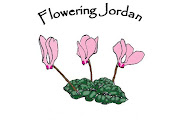The Garden Tomb site, located a few blocks from Damascus Gate, is the more contemporary Protestant alternative to the Church of the Holy Sepulcher as the location where Jesus was buried and resurrected on the third day.
From a Brief History on the Garden Tomb website: "As early as 1842 a German Theologian named Otto Thenius proposed the idea that the outcropping of rock known today as "Skull Hill" could possibly be significant in the identification of the site of the crucifixion." This site is now a bus station, with the walled garden backing up against it.
In 1867, an ancient Jewish tomb was discovered near Skull Hill, adding to the speculation that this was the location of Jesus' crucifixion, burial, and resurrection. Furthermore, a cistern and wine press discovered near the tomb seemed to indicate that the tomb was located in the garden of a wealthy Jew--Joseph of Arimathea perhaps? Perhaps. But even the articulate, Christian guides working in the garden are careful to note that no one really knows if this is the tomb of Jesus.
From a Brief History on the Garden Tomb website: "As early as 1842 a German Theologian named Otto Thenius proposed the idea that the outcropping of rock known today as "Skull Hill" could possibly be significant in the identification of the site of the crucifixion." This site is now a bus station, with the walled garden backing up against it.
In 1867, an ancient Jewish tomb was discovered near Skull Hill, adding to the speculation that this was the location of Jesus' crucifixion, burial, and resurrection. Furthermore, a cistern and wine press discovered near the tomb seemed to indicate that the tomb was located in the garden of a wealthy Jew--Joseph of Arimathea perhaps? Perhaps. But even the articulate, Christian guides working in the garden are careful to note that no one really knows if this is the tomb of Jesus.






No comments:
Post a Comment